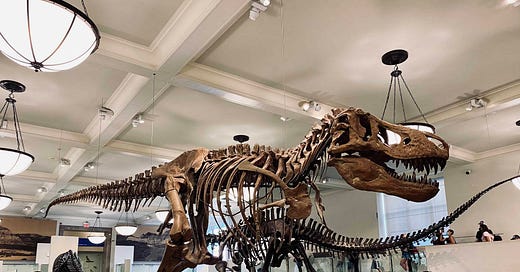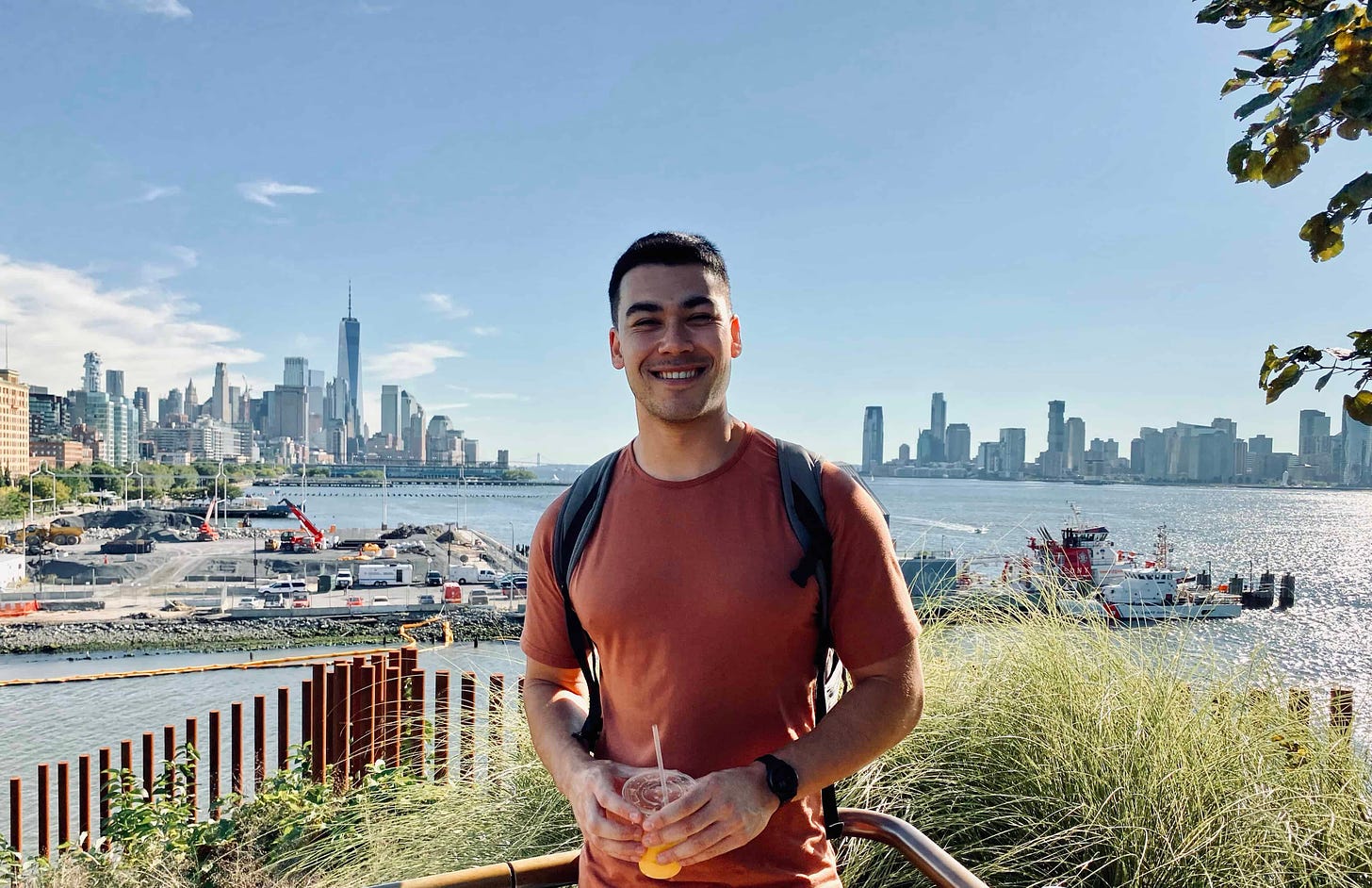
NYC's museum dinosaurs reminded me to constantly seek wonder and awe

Phil Rosen

Life is better with dinosaurs.
This weekend, I visited New York City's Natural History Museum. It was the first time I’d visited the historic halls.
You know the feeling when you go somewhere for the first time, and the place surpasses even your grandest expectations? That’s what happened. I felt wonder, over and over again. A feeling of awe remained days after.
That’s what kids feel all the time because, for the first many years, everything is new and interesting and unknown.
The day at the museum, all things considered, was straightforward. There isn’t much to a museum visit. Complexity isn’t part of the calculus.
Buy tickets a day or two prior.
Show up early the day-of.
Allow two massive dinosaur skeletons to greet you at the lobby check-in station.
Proceed with awe to the first exhibit.
Repeat until your feet hurt.
A few hours roaming through halls of dinosaurs and animals left me wide-eyed and inspired. I’m so glad there are wealthy donors that take the time and effort to build museum exhibits. Without them, myself and innumerable others would be without wonder.
But the fundamental lesson of the Natural History Museum isn’t about the Mesozoic era or Jurassic period. Nor is it the oceanography or introduction of new animals' names and aspects.
The lesson of this museum, and any other, is remembering what it feels like to be awestruck.
“I am in awe” is not as everyday a phrase in my life as I’d like it to be. I'd bet it doesn’t happen in your own life as much as you’d like either. Even if you love your job, your school program, your family — sometimes awe escapes you. It isn’t a pervasive feeling. It’s something that, to feel it often, must be sought out with intention.
Awe comes from paying attention through the eyes of a child and with the enthusiasm of a first-timer. For me, the museum brought about both of these. The grand models of animals and beasts piqued my curiosity and enthusiasm, and provided the reminder I needed to seek more of those episodes.
Awe as an antidote to complacency
When you talk to a kid, they are hopeful for what comes next — the next day, the next event.
The next dinosaur.
When you talk to an adult, especially one embedded in working life, hope is less noticeable. Often resignation or complacency has taken its place.
That’s the difference between a life filled with awe and one filled with known, explored territory. Kids see something new everyday, and they don't necessarily have to seek it out.
Novelty begets awe, and awe begets hope.
When these things are removed from daily life — as they often are as we come of age — complacency and boredom strike. A blasé attitude can come next. Then further down the line (but not as far as you’d think) comes the potential for nihilism or worse.
Life without awe is still life, but the twinkle of an eye shines less bright and a love song sounds duller.
And, without awe, dinosaur skeletons don't seem as cool and animal exhibits look like taxidermy.
Start with paying attention
Aldous Huxley’s book, Island, is the best attempt at a fictional utopia I’ve read. An island separate from the rest of the world, with spirituality, education and government coexisting in harmony.
The people that live on the island are not only happy but content. Birds populate the island. They can talk, and they talk often. But the birds have a limited vocabulary: The only thing they say is “Attention! Attention! Here and now, here and now!”
The birds repeat these words incessantly. The words act as a steadfast reminder to people across the island to stay in the moment, to pay attention to what’s before them.
The utopian society’s highest value isn’t religion or money — it’s attention to the present moment.
The Natural History Museum reminded me of these birds. The awesome scale of the exhibits kept my attention securely in the time and place I occupied. My mind did not wander. The itch to check my phone evaporated.
While I roamed the museum, attention turned into my highest value, and I did not even realize until after.
Keeping the here-and-now on top of mind begets contentment and stymies worry and anxiety. A child-like sense of wonder and awe immediately captures our attention. All else falls to the background.
Without awe, attention can lapse and interest fades.
Without awe, a stupor of complacency can set in and life can whiz by.
But unless you intentionally seek things that inspire you, that rouse your curiosity, awe is hard to come by.
The lesson here?
We could all use more dinosaurs.
Complement this article with the ultimate guide to focus for creatives, and how to turn your passion into a career, and how to master skills that make you invaluable in the job market.





